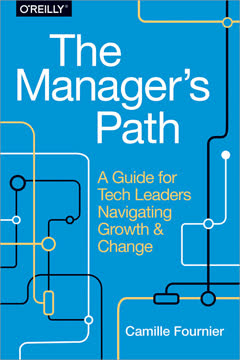Key Takeaways
1. Innovation is about creating value, not just inventing
People don't buy inventions or technology, they buy innovations that solve problems.
Value creation is key. Innovation is not just about creating new technology or products, but about solving real problems for customers. Successful innovators focus on understanding customer needs and pain points, then develop solutions that address these issues. This customer-centric approach ensures that innovations are not just novel, but also valuable and marketable.
From invention to implementation. The journey from invention to innovation involves several steps:
- Identifying a market need or problem
- Developing a solution that addresses that need
- Refining the solution based on customer feedback
- Scaling the innovation for widespread adoption
Examples of successful innovations:
- Ford's Model T: Made automobiles accessible to the average consumer
- Apple's iPhone: Revolutionized mobile communication and computing
- Airbnb: Transformed the hospitality industry by connecting travelers with local hosts
2. Sustainable business practices are crucial for long-term success
A business that makes nothing but money is a poor kind of business.
Triple bottom line. Sustainable businesses focus on three key areas:
- Economic prosperity
- Environmental stewardship
- Social responsibility
This approach ensures that companies not only generate profits but also contribute positively to society and the environment.
Long-term viability. Sustainable practices help businesses:
- Reduce costs through efficient resource use
- Enhance brand reputation and customer loyalty
- Mitigate risks associated with environmental and social issues
- Attract and retain top talent who value purpose-driven work
Examples of sustainable initiatives:
- Patagonia's commitment to using recycled materials and repairing worn products
- Unilever's Sustainable Living Plan, which aims to halve the company's environmental footprint
- Interface's Mission Zero initiative to eliminate any negative impact on the environment by 2020
3. Financial capital is no longer the primary driver of economic value
Intellectual capital, not financial capital, drives value.
Knowledge economy. In today's business landscape, intangible assets such as knowledge, innovation, and human capital are increasingly important drivers of value. This shift has profound implications for how companies invest, operate, and compete.
Key components of intellectual capital:
- Human capital: Skills, knowledge, and experience of employees
- Structural capital: Organizational processes, systems, and culture
- Relational capital: Relationships with customers, suppliers, and partners
Implications for business strategy:
- Invest in employee development and retention
- Foster a culture of innovation and continuous learning
- Build strong relationships with stakeholders
- Protect and leverage intellectual property
4. Strategy requires adapting to changing market dynamics
Make sure you take the right fork in the road—On the importance of strategic direction.
Adaptive strategy. In a rapidly changing business environment, successful companies must be able to adapt their strategies quickly and effectively. This involves:
- Continuously monitoring market trends and competitive landscape
- Anticipating and preparing for potential disruptions
- Maintaining flexibility in resource allocation and decision-making
Key elements of effective strategy:
- Clear vision and goals
- Deep understanding of customers and competitors
- Alignment of resources and capabilities with market opportunities
- Ability to execute and adjust rapidly
Examples of strategic adaptation:
- Netflix's transition from DVD rentals to streaming services
- IBM's shift from hardware to software and services
- Amazon's expansion into cloud computing with AWS
5. Effective management is about empowering and motivating people
Managing is getting paid for other people's home runs.
Empowerment and trust. Successful managers create an environment where employees feel empowered to take initiative, make decisions, and contribute their best work. This involves:
- Delegating authority and responsibility
- Providing clear goals and expectations
- Offering support and resources
- Recognizing and rewarding performance
Leadership vs. micromanagement. Effective managers:
- Focus on outcomes rather than processes
- Encourage creativity and innovation
- Foster open communication and collaboration
- Develop employees' skills and capabilities
Examples of empowering management practices:
- Google's "20% time" policy, allowing employees to work on personal projects
- Zappos' holacracy model, distributing authority throughout the organization
- Spotify's "squad" structure, giving small teams autonomy over product development
6. Human capital is the key to competitive advantage
Why brains trump brawn.
Talent as a strategic asset. In knowledge-intensive industries, human capital is often the most valuable and differentiating asset a company possesses. Successful organizations prioritize:
- Attracting and retaining top talent
- Developing employees' skills and capabilities
- Creating a culture that fosters innovation and collaboration
Key aspects of human capital management:
- Recruitment and selection
- Training and development
- Performance management
- Compensation and benefits
- Employee engagement and retention
Examples of companies excelling in human capital management:
- McKinsey & Company's rigorous recruitment and development processes
- Pixar's focus on fostering creativity and collaboration
- LinkedIn's emphasis on employee learning and development
7. Leadership demands authenticity and a clear vision
We need authentic leaders, people of the highest integrity, committed to building enduring organizations.
Authentic leadership. Effective leaders inspire trust and commitment by:
- Demonstrating integrity and transparency
- Communicating a compelling vision
- Leading by example
- Fostering a culture of accountability and responsibility
Key qualities of authentic leaders:
- Self-awareness
- Emotional intelligence
- Ethical decision-making
- Adaptability and resilience
Examples of authentic leadership:
- Howard Schultz's commitment to Starbucks' mission and values
- Mary Barra's transparency in addressing GM's ignition switch crisis
- Satya Nadella's culture transformation at Microsoft
8. Marketing is about understanding and meeting customer needs
"Find out what they want and how they want it and give it to 'em just that way."
Customer-centric approach. Successful marketing strategies are built on a deep understanding of customer needs, preferences, and behaviors. This involves:
- Conducting thorough market research
- Segmenting customers based on relevant criteria
- Developing targeted value propositions
- Continuously gathering and acting on customer feedback
Key elements of effective marketing:
- Product development aligned with customer needs
- Pricing that reflects perceived value
- Distribution channels that maximize convenience
- Communication that resonates with target audiences
Examples of customer-centric marketing:
- Amazon's personalized product recommendations
- Nike's customizable shoes through NikeID
- Dollar Shave Club's direct-to-consumer subscription model
9. Clear and strategic communication is essential for business success
"A fool may talk, but a wise man speaks."
Strategic communication. Effective business communication involves:
- Tailoring messages to specific audiences
- Choosing appropriate channels and timing
- Aligning communication with overall business strategy
- Measuring and improving communication effectiveness
Key aspects of business communication:
- Internal communication (employees, management)
- External communication (customers, investors, media)
- Crisis communication
- Brand communication
Best practices for effective communication:
- Be clear, concise, and consistent
- Listen actively and seek feedback
- Use storytelling to engage and inspire
- Leverage multiple channels (verbal, written, visual)
- Adapt communication style to cultural contexts
Examples of effective business communication:
- Apple's product launch events and marketing campaigns
- Warren Buffett's clear and straightforward annual letters to shareholders
- Johnson & Johnson's handling of the 1982 Tylenol crisis
Last updated:
Review Summary
MBA in a Book receives mixed reviews, with an average rating of 3.36/5. Readers appreciate its case studies and business strategies but note it's not equivalent to an MBA program. Some find it insightful and motivational, while others criticize its outdated examples and lack of depth in certain areas. The book covers various business topics, from innovation to leadership, but opinions on its effectiveness vary. Some readers find it helpful for understanding business jargon, while others feel it doesn't live up to its title. Overall, it's seen as a broad overview of business concepts rather than a comprehensive MBA substitute.
Similar Books










Download PDF
Download EPUB
.epub digital book format is ideal for reading ebooks on phones, tablets, and e-readers.




